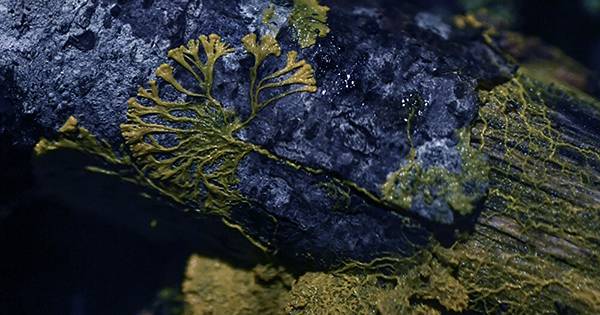It looks just like the yellow color of a rose, but slim sleds are fierce competitors to the most bizarre life forms in the world. As demonstrated by a new study, it has been able to “remember” these pieces of life information and work on their “memories”: they have a great fascination considering the lack of any form of central nervous system. The species studied here is Physarum polycephalum, which means many head wrinkles. Despite their names, slime molds are not molds or fungi, but the same domain as eukaryotes, humans and other animals. However, these are not your normal unicellular organisms.
Instead, they consist of a collection of individual cells that enclosed in a single giant cell with multiple nuclei. Extending from this giant single cell, the slim mold contains a network of tiny interstitial tubes. Organisms can be cut into many pieces but will eventually fuse back together if one raw mold comes across the other in addition to their journey, they are able to come together to form a larger organism. They may sound like aliens, but they found in many humid and dark environments, such as leaves and rotting forest debris.
As previous experiments have shown, slime molds can even considered a form of “intelligence”. If confronted from one source to another, they can “work” the shortest and easiest way. If presented with a variety of food sources, it identifies the most rewarding and prioritizes it. In a new study, scientists have now proven that slime molds contain something similar to memory. During the hunt, they are able to remember the location of food and then retrieve information about the environment to return for another time. According to the journal Processes of the National Academy of Sciences, scientists at the Max Planck Institute for Dynamics, Self-Organization, and the Technical University of Munich, Germany, were confront with food. Their observations show that the slime mold revealed a trail of chemicals after leaving a space with food.
This chemical softens the tubes in the slime mold network, which can cause other tubes to increase in diameter as they shrink. Using theoretical modeling, the researchers found that this softening of the tubes restructured the network and revived the organism where food once found. In other words, the location of the food printed within the architecture of the network, which acts as a means of storing and retrieving data.
Mirna Kramer, the first author of the Max Planck Institute study, said in a statement, “Existing impressions of previous food sources are gradually softened where they are effective and where data is stored and restored.” Past feeding events have embedded, especially in the form of dense and thin tubes in the network, the stratification of the pipe diameter. “For currently transportable flexible chemicals, the network’s thick tubes act as a highway to the traffic network and enable rapid transport throughout the animal kingdom,” Kramer added. “Printing in Network Architecture considers the decision about the future direction of east-facing immigration.
















